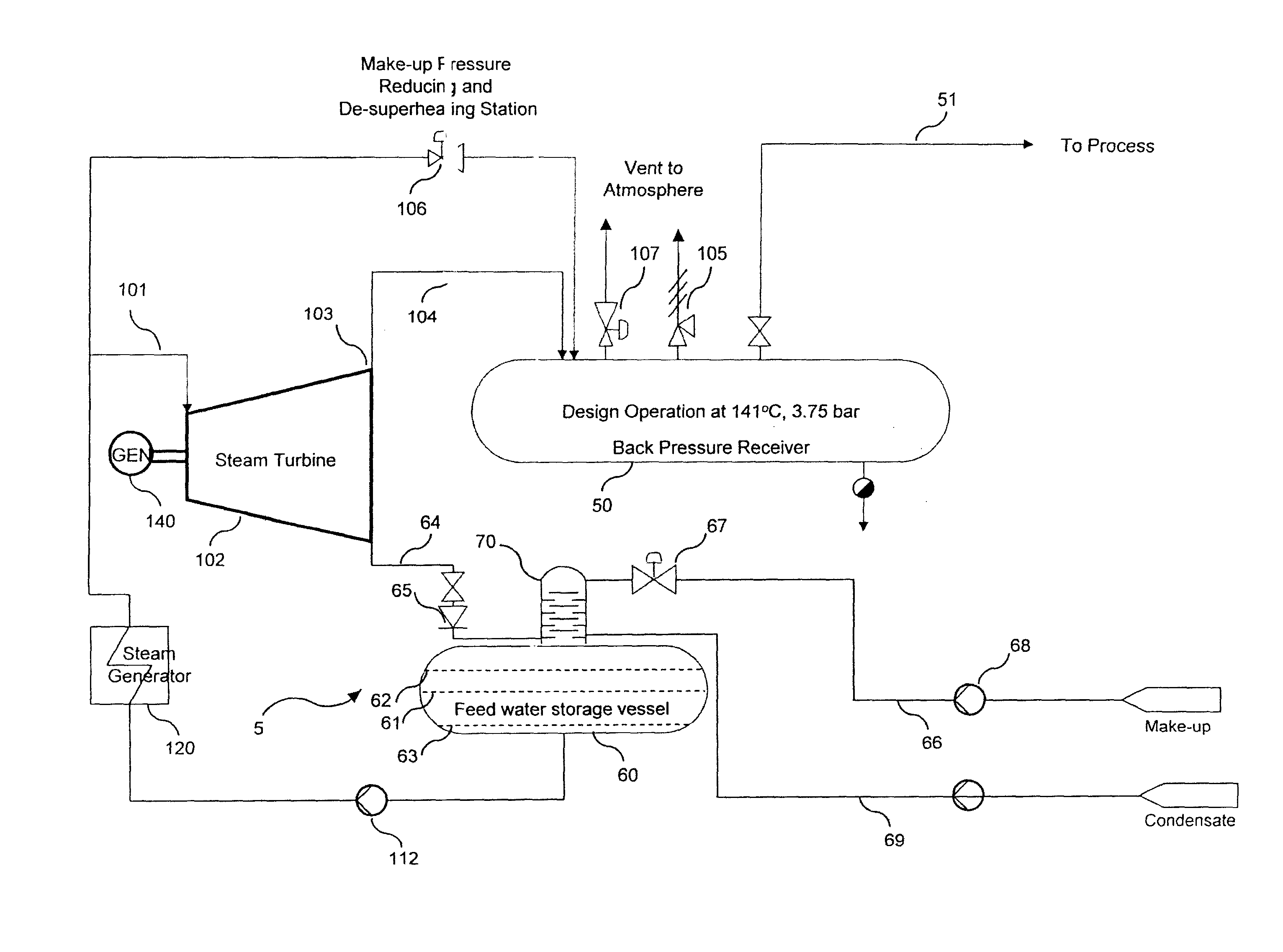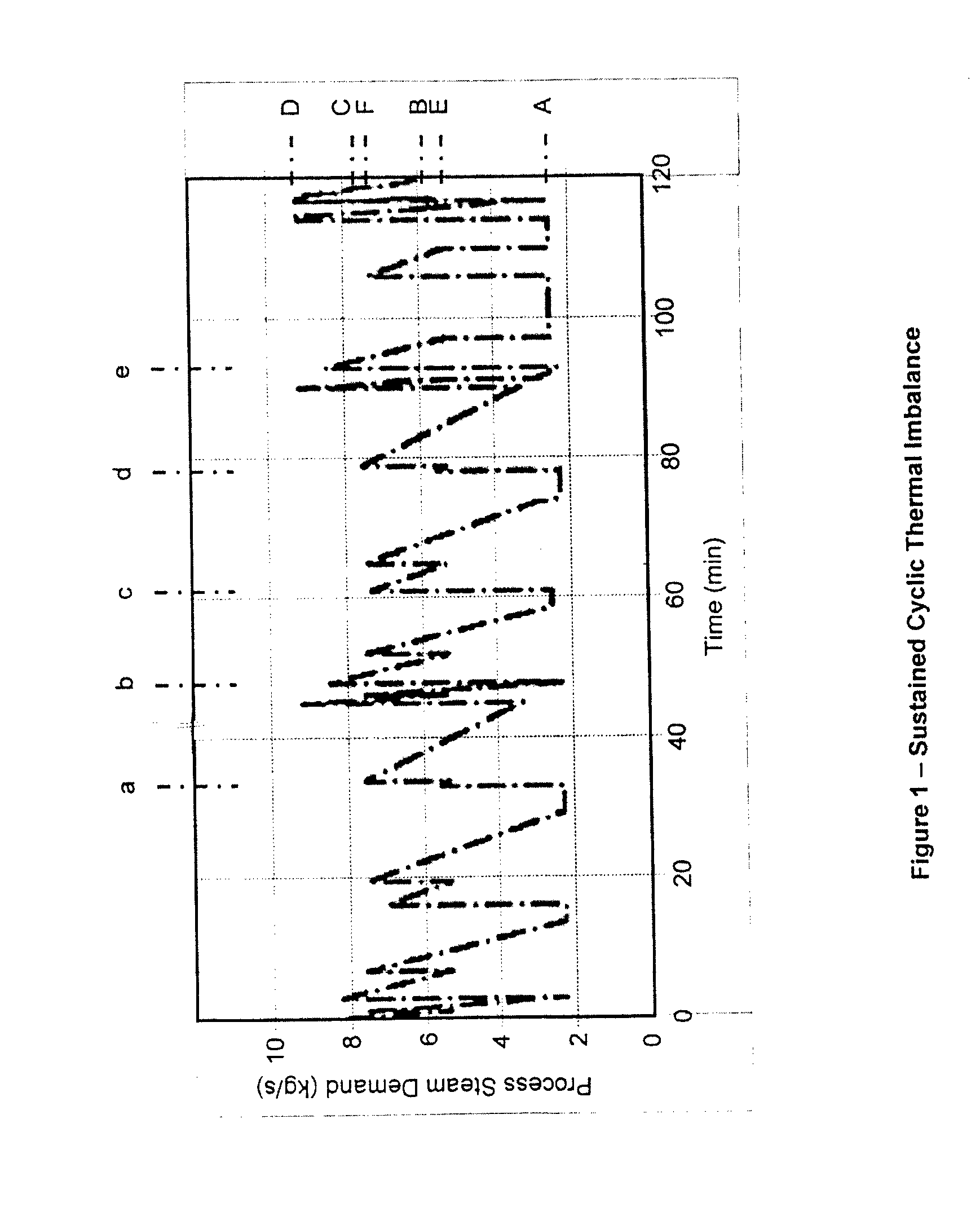Method and apparatus of producing and utilizing thermal energy in a combined heat and power plant
a technology of combined heat and power plant, which is applied in the direction of steam use, mechanical equipment, machines/engines, etc., can solve the problems of system efficiency reduction, process steam demand may drop drastically, energy wastage occurs,
- Summary
- Abstract
- Description
- Claims
- Application Information
AI Technical Summary
Benefits of technology
Problems solved by technology
Method used
Image
Examples
Embodiment Construction
[0096]The invention is directed towards offering a solution to produce and utilize thermal energy in a combined heat and power (CHP) plant, more particularly in a palm oil extraction plant (or palm oil mill) with improved operational reliability, flexibility and energy efficiency.
[0097]Certain terminology will be used this description for convenience in reference only and will not be limiting.
[0098]In this description the term “surplus steam” or “surplus vaporized secondary fluid” refers a situation where the mass flow of the fluid at the supply source to a downstream process is in excess of the mass flow of fluid at admission into the downstream process with a tendency of pressure rise in the fluid supply conduit, and the term “deficit steam” or “deficit vaporized secondary fluid” refers to a situation where the mass flow of the fluid at the supply source to a downstream process is in shortage of the mass flow of fluid at admission into the downstream process with a tendency of pre...
PUM
 Login to View More
Login to View More Abstract
Description
Claims
Application Information
 Login to View More
Login to View More - R&D
- Intellectual Property
- Life Sciences
- Materials
- Tech Scout
- Unparalleled Data Quality
- Higher Quality Content
- 60% Fewer Hallucinations
Browse by: Latest US Patents, China's latest patents, Technical Efficacy Thesaurus, Application Domain, Technology Topic, Popular Technical Reports.
© 2025 PatSnap. All rights reserved.Legal|Privacy policy|Modern Slavery Act Transparency Statement|Sitemap|About US| Contact US: help@patsnap.com



